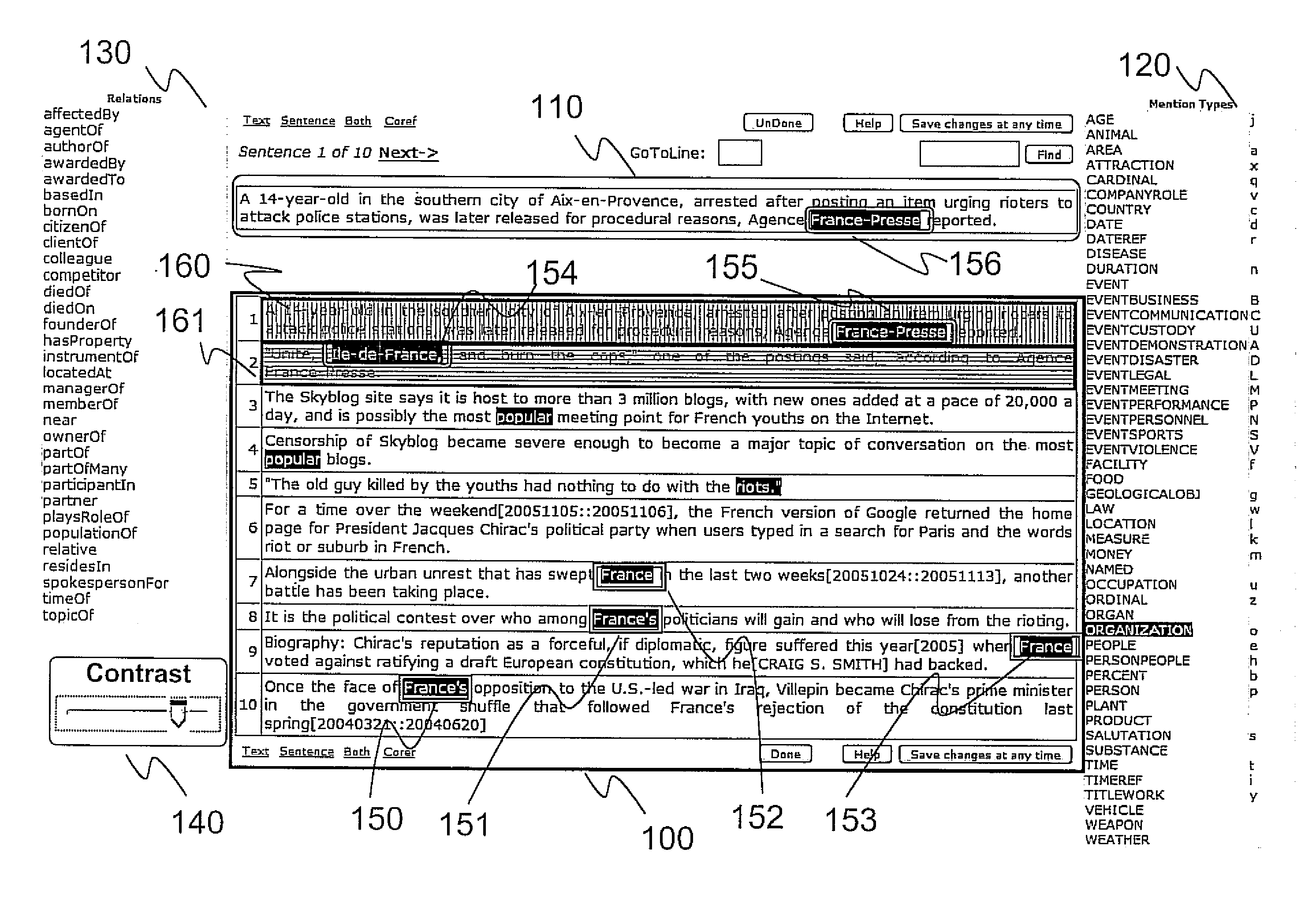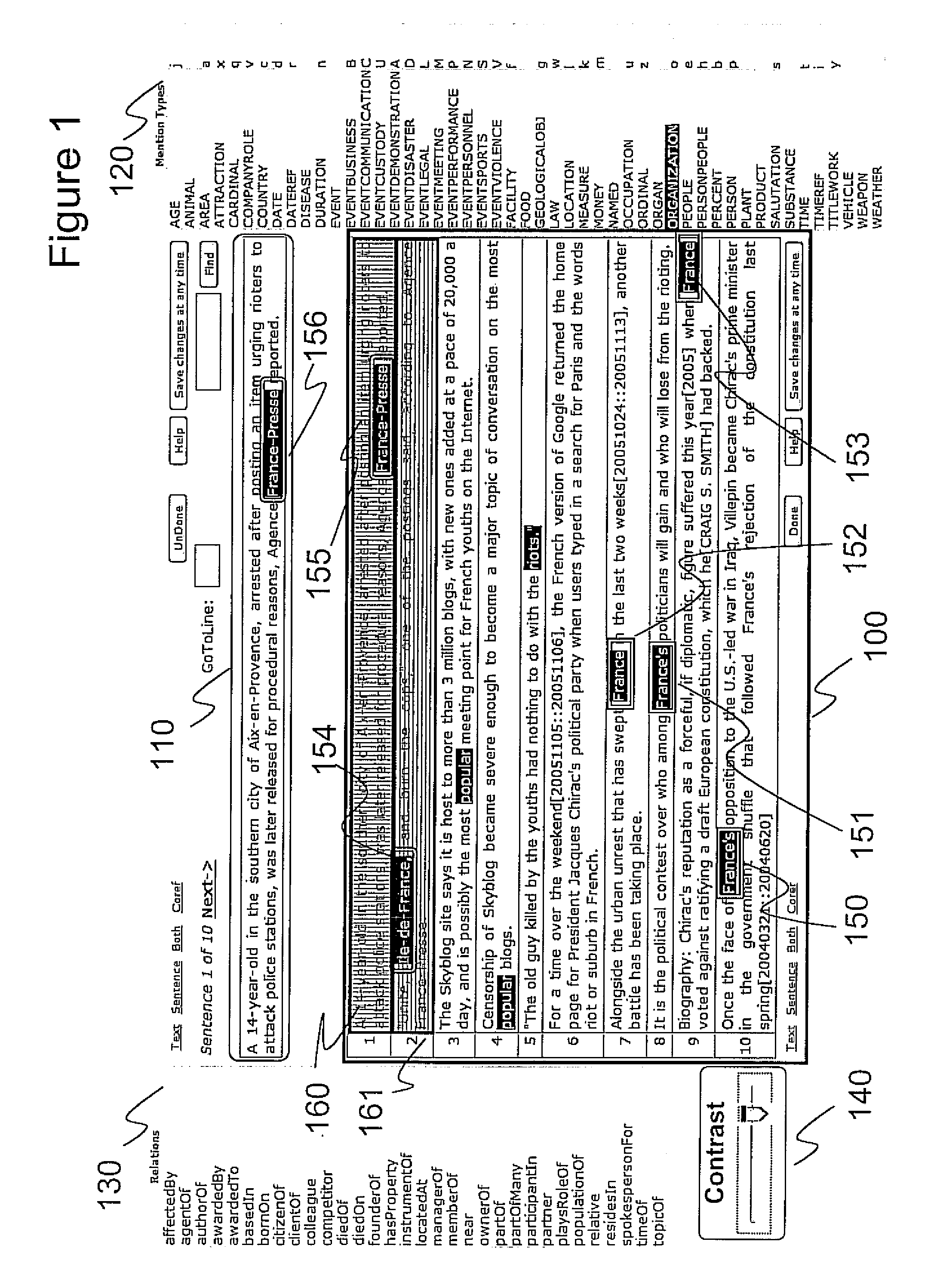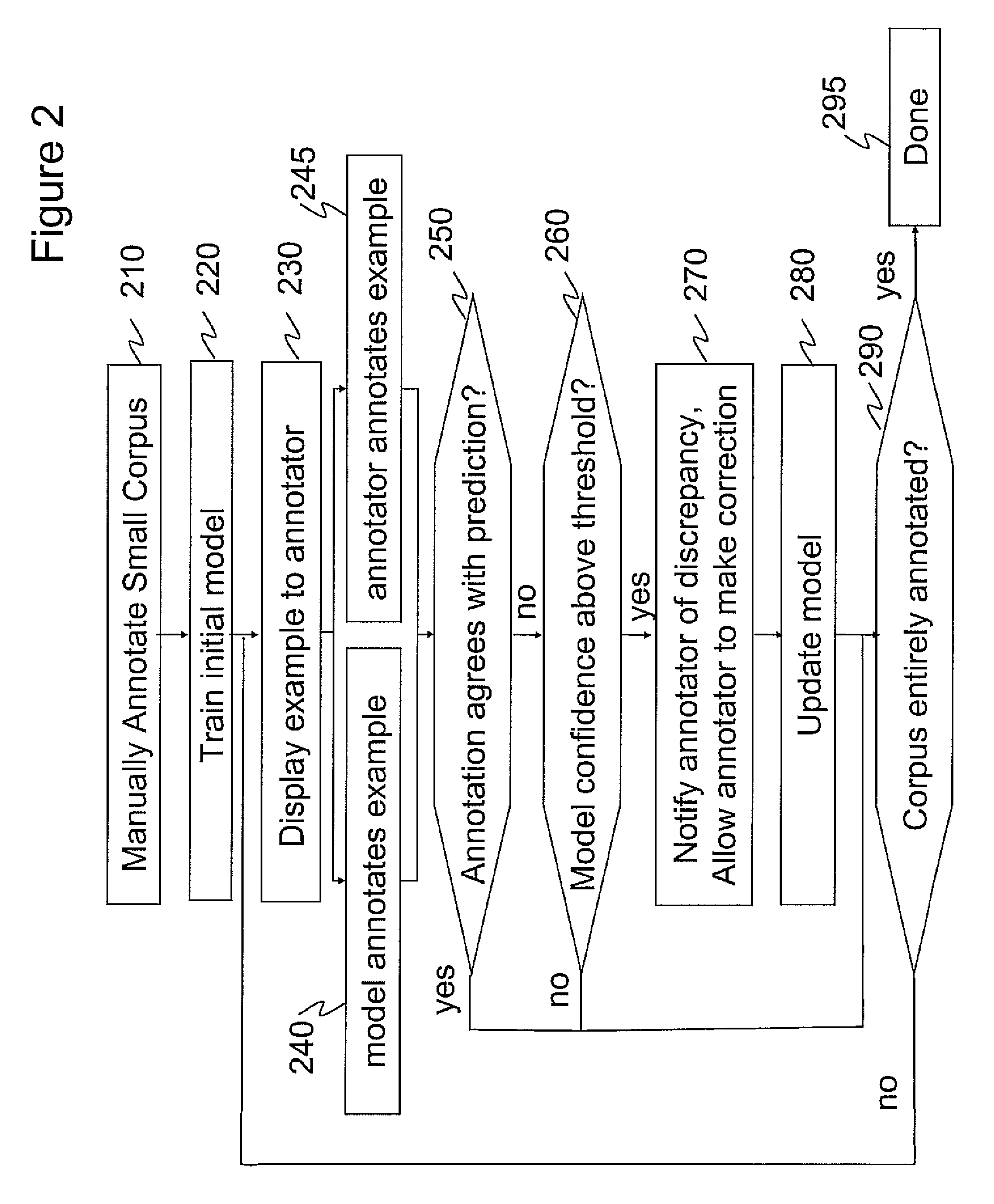Model-driven feedback for annotation
a model and annotation technology, applied in computing, instruments, electric digital data processing, etc., can solve the problems of inability to apply brute force to select the best candidate set, inability to produce large annotated corpus, and inability to produce large annotations, etc., to achieve sufficient confidence of the model on the produced annotation
- Summary
- Abstract
- Description
- Claims
- Application Information
AI Technical Summary
Benefits of technology
Problems solved by technology
Method used
Image
Examples
Embodiment Construction
[0027]Referring to FIG. 1, a user interface of an annotation system for English text having features of the current invention is provided. The user interface displays a document 100 divided into sentences, identified by increasing integers. The currently selected sentence appears at the top (110). The GUI can be used to annotate entity mentions, using the palette 120 on the right hand side, and relations between entity mentions, using the palette 130 on the left hand side. The figure shows the GUI used to annotate entity mentions. In particular, the figure shows a scenario in which the annotator has marked mentions 150, 151, 152, 153, 154, and 155 as referring to the same referent, that is, to France (meant as a political entity, that is, as an organization rather than a geographical region). Of these, 154 and 155 (which also appears as 156 at the top) are annotation mistakes.
[0028]A model trained with an initial corpus and the annotation data produced by the annotator analyzes the ...
PUM
 Login to View More
Login to View More Abstract
Description
Claims
Application Information
 Login to View More
Login to View More - R&D
- Intellectual Property
- Life Sciences
- Materials
- Tech Scout
- Unparalleled Data Quality
- Higher Quality Content
- 60% Fewer Hallucinations
Browse by: Latest US Patents, China's latest patents, Technical Efficacy Thesaurus, Application Domain, Technology Topic, Popular Technical Reports.
© 2025 PatSnap. All rights reserved.Legal|Privacy policy|Modern Slavery Act Transparency Statement|Sitemap|About US| Contact US: help@patsnap.com



